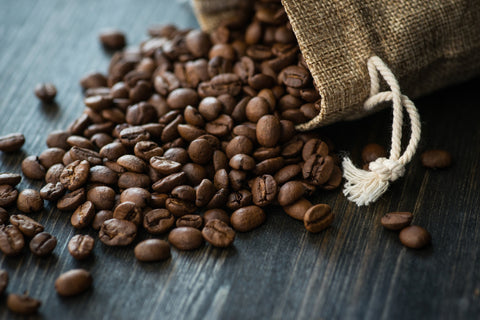In the days of overly processed foods and beverages, there's something rewarding about roasting your own coffee. It's certainly more time-consuming than using factory-roasted coffee products or serving single-serve coffee to guests, but it's far more fulfilling to do it yourself. When you start with quality-sourced beans and follow these instructions, your customers will ohh-and-ahh after every sip.
There are many proven business-roasting methods that produce coffee as light or dark as your customers desire. As a business owner, you’ll need to play with each one until you find the process that works best for you and your distribution.
Below, you’ll learn about the three most popular and accessible roasting methods.

Pan/Grill Roasting
If you’re a budding business and are looking for a unique flavor profile for your coffee, roasting in a pan or on a grill are the most inexpensive way to experiment in small batches. When you’re ready to bring your product to the market, you’ll want to consider investing in a specialized drum roaster. It will allow you to both produce larger batches and attain a more consistent roasting flavor throughout the beans.
Oven Roasting
Oven roasting can be a more streamlined process due to the oven’s ability to maintain a consistent temperature, however it’s important you assess your oven’s accuracy before beginning. Do you have an electric oven or a gas range? Does its temperature read out match a thermometer when the unit beeps that it’s reached the pre-heated goal?
Woodfire Roasting
Second only to woodfired pizza, people are clamoring for wood-roasted coffee beans. They have a totally unique flavor that even the most elite coffee drinkers can’t quite describe.
Regardless of which method your using, there is a step-by-step process to follow.
1. Preheat your oven to 500-degrees.
2. Prepare the drum roaster, pan, or device you’ll toss the beans in. A specialized coffee drum should toss beans at a temperature of 500 degrees for even and flavorful heating.
3. The beans will turn from their natural green color to yellow, and then a dry, hay-like aroma will develop. This will take about five-minutes.
4. At this point, turn the heat in the drum roaster down to about 300 degrees.
5. Monitor the pressure, temperature, and internal humidity. The beans should start to turn light brown.
6. In the final 2 to 5 minutes, the roasted coffee will develop its final flavor and complexity, or the unique notes and subtleties that you taste in each brewed cup. You’ll hear each bean crack as its internal gases leak. You’ll also see lines form on each bean.
7. Stop the drum and remove the beans.
There's an art to the process of turning raw, green coffee beans into an aroma filled bag of roasted coffee beans. You may find that each time you reach for the roasting drum you’ll produce unique flavors with varied acidity levels, and caffeine quotients. Even as you follow these instructions, the speed at which the beans reach a high internal temperature and the exact number of seconds you roast them will have a major impact on the result.
If you instead choose to purchase high-quality, finely sourced roasted coffee beans from Java Bean Plus, you're sure get a flavorful cup every time. The quality of the beans and the finesse used in the roasting process will amaze your customers and keep them coming back.



